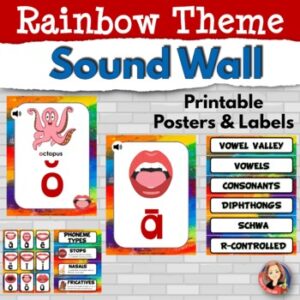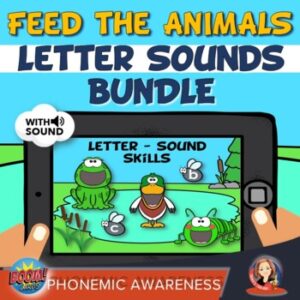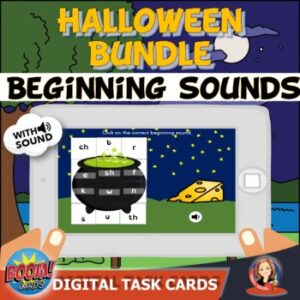The Importance of Phonemic Awareness for Strong Reading Skills
What is phonemic awareness, and why is it important for teaching reading? The ability to recognize and work with individual sounds in words is critical to building strong reading and spelling skills. It turns out that all those nursery rhymes and fun alphabet games we play with young children are not just for fun. They are building pathways for reading success.
Phonemic awareness is a good predictor of later reading skills. Before children learn to read, they need to know how sounds make up words and how to manipulate those sounds. Teachers and parents must understand why phonemic awareness is critical in teaching reading.

What is phonemic awareness?
Phonemic awareness is the ability to hear and recognize the individual sounds in spoken words and to manipulate those sounds. Once your students can identify and hear those sounds, they can translate them into understanding words in written text.
A phoneme is the smallest part of a sound in the spoken word. It makes a difference in the meaning of the words. For example: the word cat has three phonemes, /c/, /a/, and /t/. Changing the phoneme /c/ to /b/ changes the words meaning from cat to bat.
What skills build strong phonemic awareness?
 Include books, audio, songs, games, and word work that incorporates the skills below. I love phonemic awareness activities because they are fun and engaging. They are the perfect blend of fun and learning.
Include books, audio, songs, games, and word work that incorporates the skills below. I love phonemic awareness activities because they are fun and engaging. They are the perfect blend of fun and learning.
► Rhyming
The awareness of the same or similar sounds at the end of 2 or more words.
► Alliteration
Students recognize the same sound at the beginning of a word.
► Syllables
The awareness of a single unbroken sound in a word and that it usually contains a vowel.
► Sound Isolation
Students learn to recognize individual sounds in a word.
► Phonemic Identity
Students recognize the same sounds in different words.
► Categorization
Students recognize a word, in a set of three, that has an odd sound.
► Blending
Students combine separately spoken sounds to form a word.
► Segmentation
Students break a word into separate sounds and count how many sounds they hear.
► Deletion
Students recognize the word that remains when a phoneme is removed.
► Sound Addition
Students make a new word by adding a phoneme to an existing word.
► Sound Substitution
Students substitute one phoneme for another to make a new word.
What are some examples of phonemic awareness activities?
When you are looking for activities to encourage children to hear and manipulate sounds, here are some skills they should include.
► Recognizing words that begin with the same sound.
► Identifying the first, middle, and last sound in a word.
► Combining the individual sounds to make a whole word.
► Breaking a word into its unique sounds.
► Changing individual sounds in a word to make a new word.
► Recognizing rhyming words.
► Identifying and changing vowel sounds in words.
Resources
Sound Walls
Sound walls can help students to recognize the 44 phonemes in the English language. See this post on using sound walls in the classroom.
Books
Look for children’s books that have lots of rhyming, alliteration, and wordplay. Have kids try changing some words in the book by changing different sounds.
Games
Tammy’s Toolbox has a variety of resources specifically designed to help strengthen phonemic awareness skills. Here are a few:
Letter Sound Activities Boom Card Bundle
Halloween Bundle for Initial Sounds
Phonemic Awareness Bundle of Boom Task Cards
Have fun playing with sounds, and your students will be developing critical phonemic awareness skills that will lead to reading and spelling success.

Look at this post!






